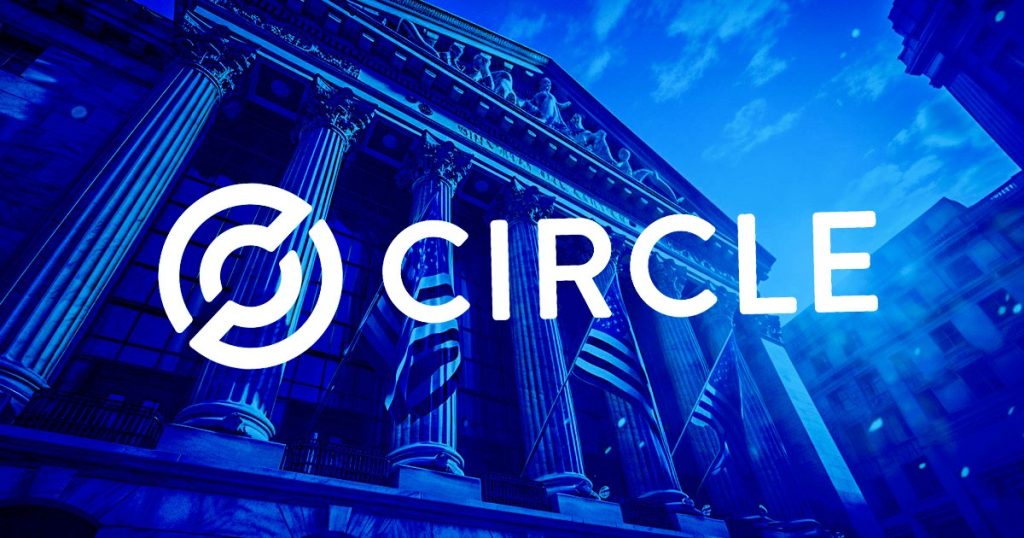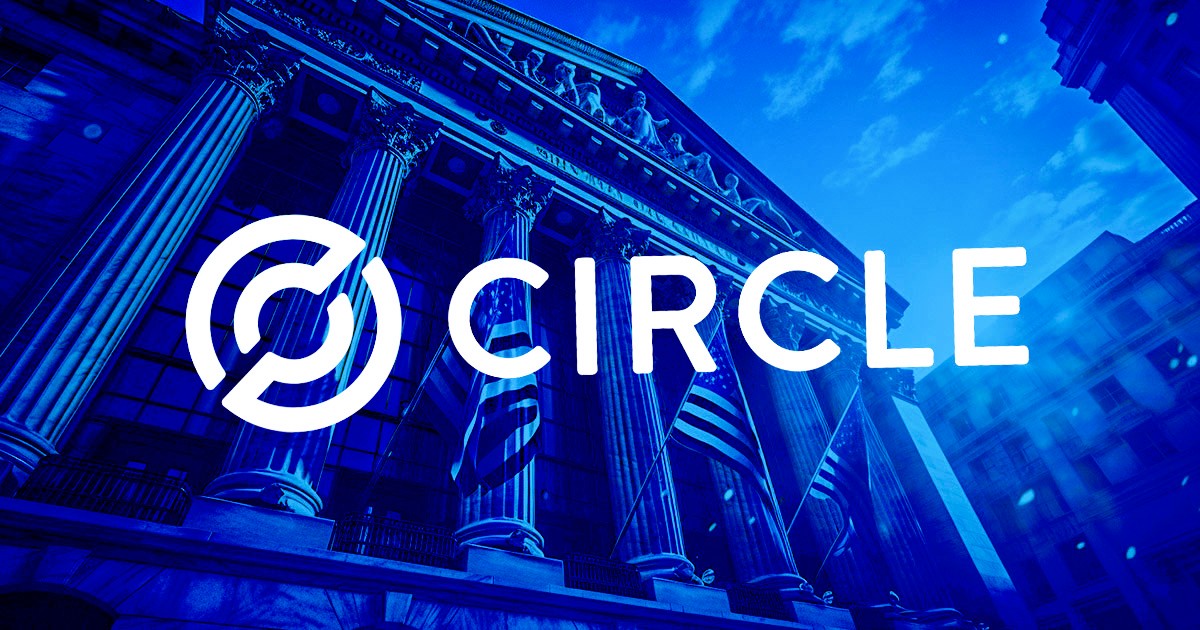
Circle’s Ambition: Bridging Digital Currencies and Traditional Banking
Circle, a prominent player in the cryptocurrency space, has recently made significant strides in its quest to secure a U.S. trust bank license. This move marks a pivotal shift in the company’s strategic direction, signaling its transition from a digital asset issuer to a more integrated financial institution. The company’s highly successful IPO, which valued it at nearly $18 billion, has provided it with the financial clout to explore broader financial services and regulatory stature. This article delves into the implications of Circle’s strategic shift, the significance of the trust bank charter, and the broader industry implications.
Contextualizing Circle’s Strategic Shift
Circle is widely recognized for its stablecoin, USDC, which has become a cornerstone of the digital currency ecosystem. Historically, the company has focused on developing a stable, secure digital dollar alternative. However, with its IPO valuation reaching nearly $18 billion, Circle has gained the leverage to explore broader financial services and regulatory stature. The move to apply for a national trust bank license is a strategic effort to embed itself deeper into the traditional financial system, leveraging the trust banking model to reinforce its credibility and operational scope.
The pursuit of a trust bank license is not merely a regulatory formality but a strategic move that underscores Circle’s ambition to operate with the stability, security, and legal recognition afforded by federal banking regulation. This shift is indicative of a maturing cryptocurrency ecosystem that is gradually intersecting with mainstream finance. It signals a willingness among regulatory agencies, such as the Office of the Comptroller of the Currency (OCC), to adapt and integrate digital assets into the broader financial regulatory framework.
The Significance of the Trust Bank Charter
In the United States, the trust bank charter functions as a form of federal banking license that grants institutions the authority to handle fiduciary services, custody, and management of assets. Such a license enables entities to operate across states under federal oversight rather than state licenses, consolidating regulatory authority and potentially easing operational barriers.
Applying for this license signifies Circle’s intent to operate with the stability, security, and legal recognition afforded by federal banking regulation. It also allows them to hold reserves, custody assets, and manage funds with the same legal backing as traditional banks, thereby elevating their legitimacy and operational capacity within the financial ecosystem.
The trust bank charter is particularly significant for Circle as it enables the company to offer a wider range of financial services. For instance, it can now provide custody services for digital assets, which is a critical service for institutional investors. This move also reinforces the stability and trustworthiness of USDC, aligning it more closely with traditional fiat-backed assets and backing the digital dollar with the credibility of established banking standards.
Implications for the Digital Asset and Financial Ecosystem
Regulatory Evolution
Circle’s move reflects a maturing cryptocurrency ecosystem that is gradually intersecting with mainstream finance. It signals a willingness among regulatory agencies to adapt and integrate digital assets into the broader financial regulatory framework. This could pave the way for more crypto-native entities to obtain banking charters, thereby normalizing digital currencies and assets as integral components of the financial system.
The pursuit of a trust bank license by Circle is a significant step towards regulatory acceptance of digital assets. It demonstrates that regulatory agencies are open to integrating digital currencies into the traditional financial system. This move could set a precedent for other crypto firms to follow, leading to a more stable and regulated digital asset ecosystem.
Enhanced Stability and Trust
For Circle, obtaining a trust bank license would solidify its role as a custodian and reserve manager, fulfilling the regulatory requirements necessary to offer more complex financial services. This reinforces the stability and trustworthiness of USDC, aligning it more closely with traditional fiat-backed assets and backing the digital dollar with the credibility of established banking standards.
The trust bank license would also enhance Circle’s ability to manage reserves and custody assets. This is particularly important for USDC, as it is backed by a reserve of assets that are held in custody. The trust bank license would provide Circle with the legal backing to manage these reserves, thereby enhancing the stability and trustworthiness of USDC.
Competitive Landscape
Circle’s initiative may ignite a trend among other stablecoin and crypto firms to pursue similar licensing pathways. Notably, Coinbase’s considerations for applying for a similar charter highlight the competitive frontier in this arena. These moves potentially foreshadow a landscape where digital assets are managed and regulated under the same legal structures as traditional banking, leading to innovations in custody, lending, and settlement services.
The pursuit of a trust bank license by Circle could also lead to a more competitive landscape in the digital asset space. As more crypto firms seek to obtain similar licenses, it could lead to innovations in custody, lending, and settlement services. This could ultimately benefit consumers, as they would have more options and better services to choose from.
Challenges and Critical Considerations
Regulatory Uncertainties
While the pursuit of a trust bank license marks progress, it also comes with uncertainties. Regulatory guidelines around digital assets, custody, and trust services remain limited and evolving, with potential for shifts that could impact the operational flexibility of these institutions.
The regulatory landscape for digital assets is still evolving, and there is a risk that changes in regulations could impact Circle’s operations. For instance, changes in regulations around stablecoins could impact the stability and trustworthiness of USDC. Therefore, Circle needs to stay abreast of regulatory developments and adapt its operations accordingly.
Operational and Compliance Burdens
Earning a trust bank license entails rigorous compliance, capital requirements, and ongoing regulatory oversight. For a technology-driven enterprise like Circle, adapting to these traditional banking standards requires significant structural adjustments, including establishing dedicated compliance teams, risk management protocols, and infrastructure upgrades.
The pursuit of a trust bank license would require Circle to make significant structural adjustments. For instance, it would need to establish dedicated compliance teams, risk management protocols, and infrastructure upgrades. This could be a significant burden for a technology-driven enterprise like Circle, which may not have the necessary expertise or resources to meet these requirements.
Consumer Trust and Adoption
While regulatory legitimacy is a step forward, how the broader market perceives these integrated digital currency providers will influence their success. Skepticism from institutional investors or retail users resistant to traditional banking oversight could pose hurdles, although it might also be addressed through transparent policies and proven stability.
The success of Circle’s move to obtain a trust bank license would depend on how the broader market perceives it. Skepticism from institutional investors or retail users resistant to traditional banking oversight could pose hurdles. Therefore, Circle needs to address these concerns through transparent policies and proven stability.
Broader Industry Implications
Circle’s actions exemplify a shift towards “banking-as-a-service” models within the crypto space, where digital currencies are seamlessly integrated into mainstream financial services. This transition could serve as a blueprint, encouraging other crypto firms to pursue formal banking licenses, thereby fostering innovation, increasing stability, and reducing systemic risks.
The pursuit of a trust bank license by Circle could also have broader industry implications. It could serve as a blueprint for other crypto firms to pursue formal banking licenses, thereby fostering innovation, increasing stability, and reducing systemic risks. This could ultimately lead to a more stable and regulated digital asset ecosystem.
Furthermore, the move aligns with ongoing discussions about central bank digital currencies (CBDCs), stablecoins’ role in payments, and the future role of digital assets in global finance. The blending of crypto and traditional banking licenses signifies a transitional phase, bridging the innovative potential of blockchain with the robustness of established financial institutions.
Future Outlook and Strategic Positioning
As Circle advances in obtaining the trust bank license, several future developments are plausible:
– Enhanced Service Offerings: With full banking capabilities, Circle could expand into lending, asset management, and other traditional banking services, leveraging its reserves and custody infrastructure.
– Regulatory Precedent: Successful licensure and operation as a trust bank could set a regulatory precedent, influencing policy decisions and licensing standards in this sector.
– Industry Leadership: Circle’s move solidifies its position as a pioneer in bridging digital currencies and traditional finance, potentially influencing the strategy of competitors and regulators alike.
The pursuit of a trust bank license by Circle could lead to several future developments. For instance, it could expand into lending, asset management, and other traditional banking services. It could also set a regulatory precedent, influencing policy decisions and licensing standards in this sector. Furthermore, it could solidify Circle’s position as a pioneer in bridging digital currencies and traditional finance, potentially influencing the strategy of competitors and regulators alike.
Final Reflection: A Pivotal Moment
The pursuit of a U.S. trust bank license by Circle captures a moment where innovation meets regulation, signaling a new chapter in the evolution of digital finance. It embodies the ambitions of a company seeking legitimacy and integration within the global financial infrastructure, while also reflecting the broader trend of digital assets gaining regulatory acceptance. Whether this move will foster a more stable, efficient, and inclusive financial system or pose unforeseen challenges remains to be seen, but undeniably, it’s a defining step in the ongoing journey of cryptocurrencies transitioning from disruptive technology to foundational financial assets.
The pursuit of a trust bank license by Circle is a significant step towards the integration of digital currencies into the traditional financial system. It demonstrates the willingness of regulatory agencies to adapt and integrate digital assets into the broader financial regulatory framework. This move could set a precedent for other crypto firms to follow, leading to a more stable and regulated digital asset ecosystem. However, it also comes with challenges and uncertainties, which Circle needs to address to ensure its success. Ultimately, this move is a defining step in the ongoing journey of cryptocurrencies transitioning from disruptive technology to foundational financial assets.





